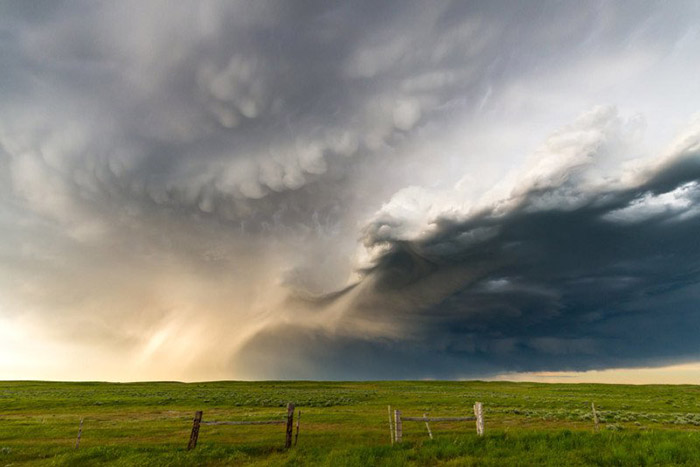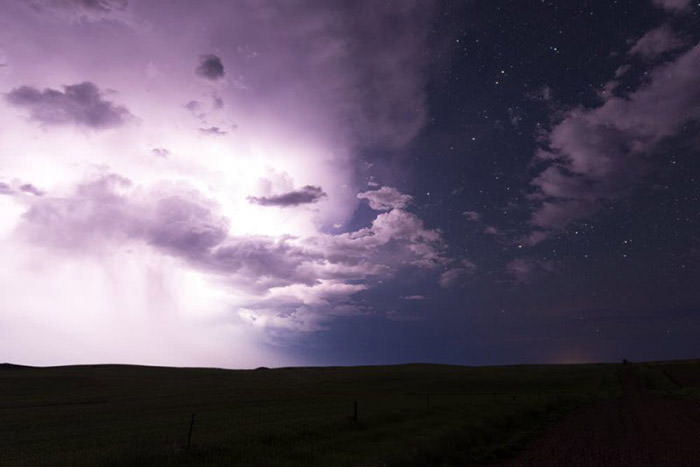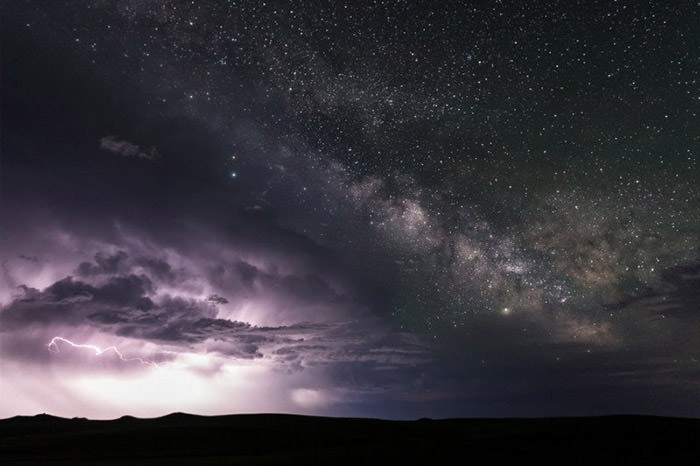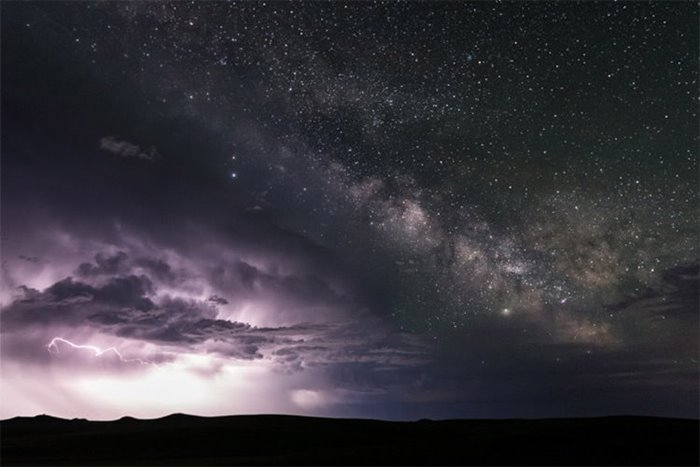Amazing view of the Milky Way after the storm
Corey Motic, An American Photographer And Meteorologist In Glasgow, Montana, Tells About One Of His Most Amazing Jobs, Photographing The Milky Way While A Severe Thunderstorm Was Taking Place.
I’ve photographed the stars as they emerge from above storms and lightning before, but I never imagined I’d be able to photograph the Milky Way up close during a storm.
This fantastic shoot happened on June 4th, 2018, as a storm followed me across eastern Montana.
With my friends and fellow photographers, we left home at 11 am and drove for about 3 hours to the destination to eat and wait for the storm in the area where it was likely to occur. The initial storms occurred around 4-5 pm, but no significant phenomenon appeared on the radar.
We set out to photograph lightning during the early storms and took pictures of several lightning strikes, but no exciting photos of the water came out. Finally, a strong storm started to develop to the south, and we headed towards it to get into position.
When we reached the storm, its lower surface was very high, and it was impossible to photograph the upper sky. There was still no rotation, and the battery was weakening.
We took a few photos of the exciting storm structure and decided it was no longer worth going after the storm, and it was time to head home after several hours of driving.

While refueling the car, we noticed that new lines of the storm were forming towards the east, that is, on the way back. Instead of stopping for dinner, we decided to head north and find a good spot in front of the storm to photograph the lightning.
Unfortunately, we could not reach the battery in time, and when we got to the right place, it started to rain. It was almost midnight when we decided to wait 30 minutes and go to the back edge of the rainy area to take some lightning pictures.
We sat on the sandy and dirty road under the rain and waited patiently.
As soon as the rain stopped, we set up the tripods. After about 10 minutes of shooting, the stars appeared in the clear sky behind the storm. It took a few minutes for the storm to subside enough for the sky to clear above us. Immediately after the sky was removed, I started taking pictures of lightning and the night sky, and I had no idea what was happening behind my camera.


After several shots, it turned out that the best chance of getting good images was at ISO 2500 with a 25-second exposure at F/2.8 (the lens I used was a Tamron 15-35mm at F/2.8, and my camera was a Nikon D610).
During those 25 seconds, I needed a lightning strike to occur. Otherwise, the storm would have allowed for a decent shot. I continued shooting with these settings until the storm stopped producing visible lightning. As time passed, more Milky Way could be seen in each image.
I never thought I could photograph lightning and the Milky Way simultaneously. I never imagined that such a result would be achieved, and that I could record such images. As with all the photos I take of the stars and the night sky, I edited the pictures in Lightroom and only removed minor imperfections using Photoshop.












